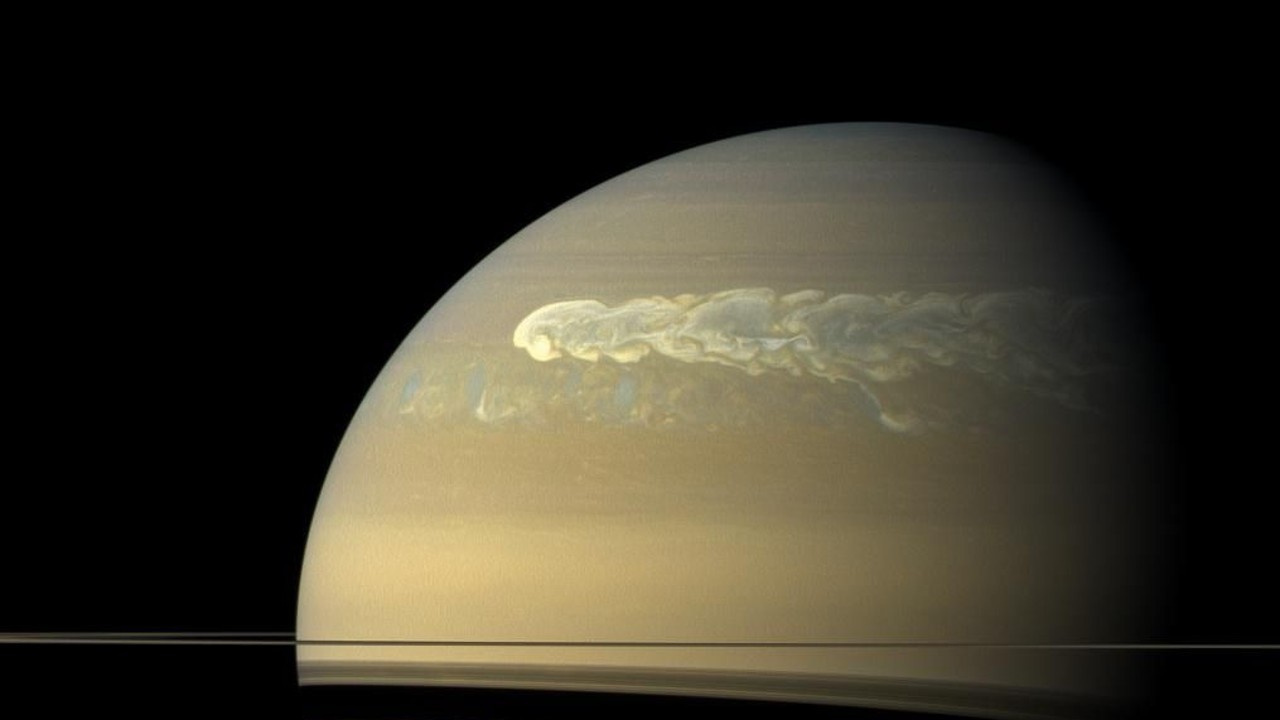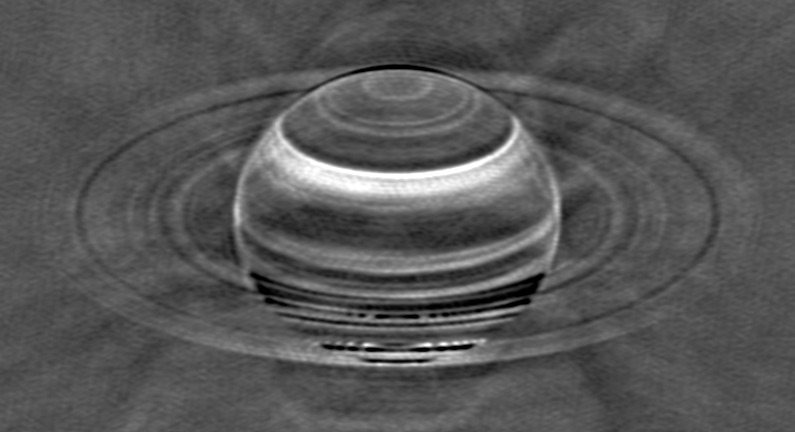
Scientists have discovered that Saturn experiences long-lasting megastorms that persist for centuries and churn up its deep atmosphere.
Saturn had previously been considered somewhat calmer than its fellow solar system gas giant Jupiter, which has been home to a 10,000-mile-wide storm called the Great Red Spot for hundreds of years. Though the Great Red Spot remains the largest storm in the solar system, the newly uncovered storms of Saturn are still powerful enough to put Earth's hurricanes to shame.
The megastorms of Saturn, thought to occur between every 20 and 30 years, are similar to hurricanes on Earth but are much larger. Whereas Earth's hurricanes get energy from our planet's oceans, the mechanism driving megastorms in the hydrogen and helium-rich atmosphere of Saturn is somewhat mysterious.
But astronomers from the University of California, Berkeley and the University of Michigan, Ann Arbor have learned more about these storms on Saturn by studying disruptions in the distribution of ammonia gas in the planet's deep atmosphere. "Understanding the mechanisms of the largest storms in the solar system puts the theory of hurricanes into a broader cosmic context, challenging our current knowledge and pushing the boundaries of terrestrial meteorology," University of Michigan assistant professor Cheng Li said in a statement.
Related: Saturn: Everything you need to know about the sixth planet from the sun
Li and the team detected this disruption by looking at radio emissions from ammonia in Saturn's atmosphere using the Karl G. Jansky Very Large Array (VLA) in New Mexico. Though Saturn appears to have a mostly uniform color in visible light, its distinctive banding and the differences between atmospheric layers at varying altitudes are more evident when seen in radio waves.
That's because radio observations can peer deeper into planets' atmospheres than optical telescopes, allowing astronomers to better understand the chemical and physical processes that lead to cloud formation and the transfer of heat. "At radio wavelengths, we probe below the visible cloud layers on giant planets," UC Berkeley astronomer Imke de Pater said in the statement. "Since chemical reactions and dynamics will alter the composition of a planet's atmosphere, observations below these cloud layers are required to constrain the planet's true atmospheric composition, a key parameter for planet formation models."

The team found something surprising in radio emissions emanating from within the atmosphere of Saturn in the form of anomalies in ammonia concentrations. They were able to connect these anomalies to prior megastorms that raged through the gas giant's northern hemisphere.
The concentration of ammonia was lower in the middle latitudes of Saturn, suggesting a higher ammonia ice-cloud layer. Around 160 to 320 miles (100 to 200 kilometers) below this, however, concentrations of ammonia increased. The team thinks that this enrichment is the result of ammonia being transported from the upper layers of the atmosphere to the lower layers in the form of ammonia rain. This effect is the result of megastorms and can last for hundreds of years.
The astronomers' investigation shows that even though Saturn and its fellow gas giant Jupiter have similar compositions, the fifth and sixth planets from the sun are remarkably different.
While Jupiter also has differences between layers throughout its atmosphere, these variations aren't driven by storm activity, as is the case with Saturn. This means that there is a considerable difference between gas giants, even when they exist next to each other in the same planetary systems.
The research could also have an impact on how scientists search for megastorms across gas giants outside the solar system.







